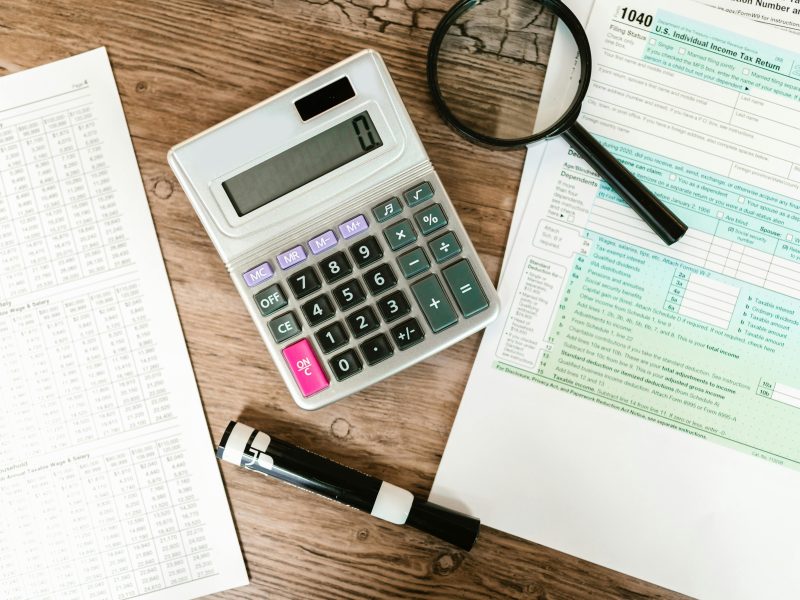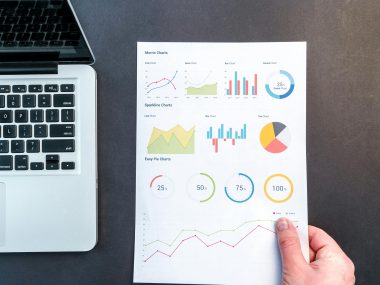When it comes to your financial health, few metrics have as much impact as your credit utilization ratio. This seemingly small figure can be the difference between a soaring credit score and one that flounders. In this detailed guide, we’ll explore the ins and outs of credit utilization—what it is, why it matters, and how you can keep it at an ideal level to ensure your credit remains in top shape.
What Is a Credit Utilization Ratio?
The term ‘credit utilization ratio’ might sound complex, but it’s a simple concept at heart. This ratio reflects the percentage of your available credit that you’re actively using on your credit cards. To paint a broad-stroke picture, if your total credit limit across all cards is $10,000 and your current debt is $3,000, your credit utilization ratio would be 30%.
Understanding your credit utilization ratio is key because it significantly influences your credit score. Lower ratios are generally seen as a sign of prudent financial management, indicating you’re not overly dependent on borrowing.
It’s no financial fairy tale; the formula is straightforward: keep your credit utilization below 30% of your limits, and your credit report will likely thank you.
To steer your credit utilization in the right direction, here’s what you can do:
Make multiple payments each month: Not only before your due date but spread throughout the billing cycle.
Spread your spending: Instead of maxing out a single card, distribute charges across different cards.
Request higher credit limits: If you’ve shown responsible usage, ask for a credit limit increase—but don’t increase your spending.
Pay down existing debt: It’s the most straightforward way to lower your utilization, reducing your overall balance.
Keeping a keen eye on these strategies can pave the way to a healthier credit portfolio that lenders will look upon favorably.
1. What Is Credit Utilization, and Why Is It Important to Keep It Low?
Credit utilization, quite simply, is the percentage of your available credit that you currently use. It’s a crucial gauge of your financial dependency on credit facilities. A lower ratio reflects well on you, suggesting you have your financial matters well in hand, and greatly improves your credit score—a win all around.
The importance of maintaining a low credit utilization ratio cannot be overstated. It’s one of the golden rules of personal finance: keep it below that magical 30%. Low utilization not only suggests you’re not drowning in debt, but also keeps you in the good books of lenders, who may offer more favorable terms or lower interest rates as a result.
And here’s how you can stay ahead:
Be mindful of the 30% rule: Aim to stay far below it to ensure your ratio supports a robust credit score.
Keep a buffer: To account for emergencies without pushing your utilization too high.
Understand the implications: High utilization can spell trouble and may lead to less favorable borrowing conditions in the future.
Refining your financial strategies with these considerations in mind is essential for anyone looking to maintain—or achieve—good credit standing.
2. Can You Provide Some Strategies for Reducing My Credit Utilization Rate?
Reducing your credit utilization rate is less about financial witchcraft and more about smart, strategic moves. It’s not about earning more money, and it’s about managing what you have better.
Pay down balances: This is the clearest route to a healthier utilization ratio.
Request credit limit increases: Doing so lowers your utilization, as long as your spending also doesn’t spike.
Distribute purchases: Use more than one card for your expenses, keeping the balance on each card lower.
Pay bills multiple times a month: By doing this, your reported balance, and thus your utilization, decreases.
Here’s a practical list to guide your actions:
Strategically pay off high-utilization cards first: Target cards close to their limits to bring your overall ratio down quickly.
Avoid closing old credit cards: This can inadvertently increase your utilization ratio by reducing your available credit.
Make payments before the statement closes: Lower the balance reported to credit bureaus.
By adopting these strategies, you’re not just lowering a number; you’re building a financial profile that could benefit you for years to come.
3. How Often Should I Check My Credit Utilization to Ensure It Remains Low?
Keeping your credit utilization low is not something you achieve once and forget about—it requires regular vigilance. It should be part of your monthly financial routine, a check-up to ensure your financial health remains strong.
Frequent checks give you a clear picture of your credit standing and allow for prompt corrective action should your utilization begin to climb. A monthly review is ideal—mark it in your calendar or set up an alert.
Processing this habit in your financial regimen can look like this:
Review statements monthly: At a minimum, when your credit card statements arrive.
Enable banking alerts: Set these up to keep informed about your balance and available credit.
Adjust spending as necessary: Use your regular check-ins as an opportunity to rein in spending if your utilization is trending upwards.
By consistently doing this, you maintain strong control over a factor that heavily influences your credit health.
4. Does Paying Off My Balance in Full Each Month Affect My Credit Utilization?
Yes, absolutely; paying off your balance in full each month is a powerful way to positively affect your credit utilization. It reassures creditors of your ability to handle your finances responsibly, which could lead to perks like higher credit limits and, consequently, lower utilization rates.
Your balance at the time of your statement closing is typically reported to the credit bureaus. Paying off your balance before this date can help ensure a lower utilization is recorded, hence improving your credit score.
Here are some bonus tips:
Understand the credit scoring model: Knowing that utilization impacts around 30% of your score helps prioritize this activity.
Align payments with reporting dates: Find out when your issuer reports to credit bureaus and pay before that date.
Adopting these habits not only supports a healthy utilization ratio but can also set the stage for enhanced credit opportunities down the line.
5. Are There Any Specific Tools or Apps Recommended for Tracking and Managing Credit Utilization?
In the digital age, there’s no shortage of tools and apps dedicated to helping you manage every aspect of your financial life, including credit utilization.
Here’s what you can incorporate into your financial toolkit:
Banking and credit card issuer apps: These often include in-built tracking options.
Credit monitoring services: They provide real-time updates and insights, sometimes for free.
Personal finance management software: Tools like Mint consolidates all financial data for easy oversight.
Taking advantage of these tools can reduce the manual effort involved in credit management and help you stay on top of your financial game.
How Much Will Lowering Credit Utilization Affect Score
When discussing credit utilization and its impact on your credit score, it’s essential to first understand what credit utilization actually means. Credit utilization refers to the percentage of your available credit that you’re currently using. It’s calculated by dividing your total credit card balances by your total credit card limits.
For example, if you have a credit card with a $10,000 limit and you have a balance of $2,000, your utilization for that card is 20%.
Credit utilization is a critical factor in your credit score because it accounts for approximately 30% of your FICO score. This makes it the second most significant category in credit score calculations, right behind payment history.
A high utilization rate signals to lenders that you may be overextended and at higher risk of defaulting on your obligations, which can lower your credit score.
Impact of Lowering Credit Utilization:
Lowering credit utilization can have a significant and positive effect on your credit score. FICO scores are sensitive to the ratio of your revolving credit card debt to your available credit lines.
Here’s what happens when you lower your utilization:
1. Improved Perception by Lenders: Lenders prefer to see a utilization ratio of 30% or less because it suggests you’re managing your credit well and not overspending. Lowering your credit utilization to this level can make you appear more financially responsible to potential lenders.
2. Boost in Credit Score: Reducing your credit card balances can improve your score fairly quickly. People with a high credit utilization can see their scores improve by dozens of points when they reduce their utilization below 30%.
3. Greater Flexibility in Financial Decisions: With a lower utilization and an increased credit score, you may qualify for credit products with better interest rates and terms. This can save you money on future loans or credit accounts.
4. It Can Help Even If You Already Have Good Credit: Even if your credit scores are already strong, lowering your utilization could still be beneficial. The closer you are to a 0% utilization (without being at 0%, which could imply you’re not using your credit at all), the more likely you are to have a top-tier credit score.
Tips for Lowering Credit Utilization:
Pay Down Balances: The most straightforward way to lower your credit utilization is by paying down your credit card balances.
Increase Your Credit Limits: You can also ask for a higher limit on your credit cards, which can instantly lower your utilization, provided you don’t increase your spending.
Spread Out Your Charges: If you’re using one card heavily and others not at all, consider spreading your charges across cards to keep each card’s individual utilization lower.
Set Balance Alerts: Setting alerts to notify you when your credit card balance reaches a certain threshold can help you keep your utilization in check.
Keeping a Sharp Eye on Your Utilization
Credit utilization is not a passive number but a dynamic metric you can control with informed choices. By using these tips and tricks, you’re not just improving a percentage but fortifying your financial future:
- Monitor balances frequently to avoid creeping ratios.
- Make strategic payments multiple times to keep balances low.
- Stay aware of your credit limit to prevent accidental over-reach.
With these strategies embedded in your financial habits, your credit utilization rate can be a testament to your financial savvy, opening doors to a brighter credit future. Let your financial discipline chart the course, and watch as your creditworthiness reaches new heights.
Please Help Share This Post









